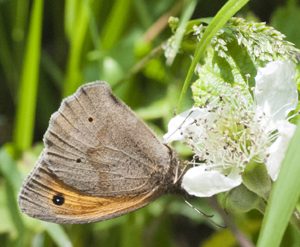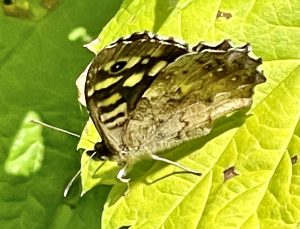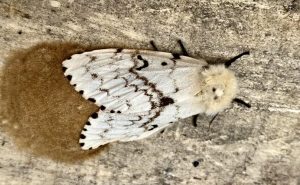The good, the bad and the butterflies

The UK has 58 resident species of butterflies, according to Butterfly Conservation. Sadly, approximately half are now under threat - being on the Red List of endangered butterflies. The Red List has seven levels of conservation:
- least concern,
- near threatened,
- vulnerable,
- endangered,
- critically endangered,
- extinct in the wild, and
- extinct.
Butterflies and moths generally need :
- A source of food for their caterpillars. Sometimes, this is a single plant species but most species are not quite so ‘fussy’.
- Adults usually need a source of nectar - in the form of nectar; the sugar-rich liquid formed in the nectaries of flowers. Again, some species have very specific requirements and will only visit certain plants. Conversely, some adult moths do not feed at all !
- For butterflies and certain day-flying moths, they need a place to warm up and fly, to bask in sunlight. Caterpillars may need warmth in order to develop to maturity. All invertebrates are ‘cold blooded (poikilothermic), taking their temperature from the surroundings.
- Eggs, larvae or adults need a place to spend the winter in ‘safety’, where they are not so vulnerable to predators or extremes of weather. This often takes the form of taller vegetation, sometimes evergreen, like ivy. Structurally diverse woodlands can also provide warm micro-habitats, shelter and breeding spots.

There is some good news amongst the bad. Two species, the large blue and the high brown fritillary, have been subject to targeted conservation interventions and have now moved from away from critically endangered.
The large blue, in fact, was declared extinct in 1979 but was re-introduced with specimens from Sweden and is now to be found in Somerset and the Cotswolds on restored wildflower grasslands. The high brown fritillary has also benefitted from conservation efforts e.g. creation of clearings and rides so whilst still vulnerable, its status has improved. Another positive is that the large tortoiseshell has reappeared (since 2019) in several locations in Southern England. Its decline / loss has been associated with the loss of millions of elms (through dutch elm disease) on which caterpillars feed. They can, however, be found on Aspen, Poplars and Willows.
There are still concerns for some species with the loss of specific habitats, such as flower-rich chalk grassland (favoured by the chalk hill blue and silver spotted skipper). It is thought that nitrogen pollution (from fertilisers and vehicles) may be a factor. More nitrogen encourages more vigorous grasses which outcompete certain species of wildflowers (critical to caterpillar survival).
 On the moth front, recent weeks have seen the arrival of the striped hawkmoth. This is a migratory species but it cannot survive our winters. Specimens of the painted ladies have also arrived on the prevailing winds. These have travelled from sub-saharan Africa (by means of several generations) always moving in search of food. The painted ladies can breed here during the summer months, making use of thistles, nettles, and mallows. At trend of the summer, the painted ladies return to warmer climes, but they fly at such high altitudes that they are not normally seen. Their migration was spotted by the use of radar, which can detect insects at heights of a kilometre or more. It recorded painted ladies flying at a height of some 500 metres as they left the UK going south, again making use of favourable winds.
On the moth front, recent weeks have seen the arrival of the striped hawkmoth. This is a migratory species but it cannot survive our winters. Specimens of the painted ladies have also arrived on the prevailing winds. These have travelled from sub-saharan Africa (by means of several generations) always moving in search of food. The painted ladies can breed here during the summer months, making use of thistles, nettles, and mallows. At trend of the summer, the painted ladies return to warmer climes, but they fly at such high altitudes that they are not normally seen. Their migration was spotted by the use of radar, which can detect insects at heights of a kilometre or more. It recorded painted ladies flying at a height of some 500 metres as they left the UK going south, again making use of favourable winds.
Comments are closed for this post.
